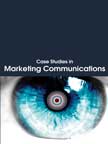Marketing Management
 |
Details
Textbook:
Pages : 500;
Paperback;
210 X 275 mm approx.
Workbook:
Pages :
282; Paperback;
210 X 275 mm approx, Sample Applied Theory Questions
Pricing
Textbook Price: Rs. 900;
Workbook Price: Rs. 700;
Available only in INDIA
Buy Now
Please allow 5 to 10 days for delivery.
Detail Table of Contents
Advertising, Sales Promotion and Public Relations : Chapter 20
SUMMARY:
Advertising is the paid form of most widely used personal mass communication. It can be in oral, written or visual form and is sponsored by an identifiable source. Advertising is carried out in various mass media like the TV, radio, newspapers, magazines, out door displays, the Internet, etc. It is highly flexible in nature and can reach a large target audience. Hence, commercial organizations, non-profit organizations and government agencies use it widely.
|
|
and its availability at various sources. (iii) Setting the advertising budget: Marketers can use various methods like objective and task method, percentage of sales method, affordability method and competitive parity method to set the advertising budget. (iv) Developing the advertising message. (v) Selecting the media – marketers need to study the feasibility of the media used. The factors that determine the choice of media are reach, frequency and media impact. (vi) Evaluating the advertising effectiveness.
Sales promotion is an activity taken up to boost the sales of a product. It includes a host of activities like advertising campaigns, public relation activities, distribution of free samples, offering free gifts, conducting trade-fairs, exhibitions, competitions, offering temporary reduction in price, launching door-to-door selling, conducting demonstrations at schools, telemarketing, etc. It is used to (a) encourage the customer to try new products, (b) attract new customers, (c) counter the promotional activities of the competitors and (d) make the customer brand loyal. Sales promotion can be directed to customers and other business associates like distributors and retailers. Consumer sales promotion methods include (a) price promotions, (b) coupons, (c) free gifts and free samples, (d) money refund and rebates, (e) point of purchase displays, (f) installment offers, (g) consumer contests, (h) consumer sweepstakes and (i) trade shows. Trade sales promotion methods include (a) buying allowance, (b) premiums, (c) buy back allowance, (d) merchandise allowance, (e) free merchandise, (f) dealer loader, (g) dealer listing, (h) scan back allowance and a host of other activities.
Public relations is a planned and sustained effort to establish and maintain goodwill and mutual understanding between an organization and its public. The role of PR is to identify the relevant public and influence their opinion. Publicity is a sub function of PR that acts as a bridge between the organization (its products) and its public. Publicity is usually carried out in the form of a) a news item, press release or an article in a newspaper or mass medium like TV, b) it can be in the form of a interview or speech delivered by the company executive at a press conference or c) a one to one communication with the target audience. PR managers follow a systematic approach of setting the objectives, selecting the message and media vehicle, plan the implementation process and evaluate the PR program’s effectiveness. Major PR tools of a firm include brochures, newsletters, logos, annual reports, news releases, feature articles, captioned photographs, press conferences, event sponsorships, etc. Organizations should avoid negative public relations. They should device policies and procedures to deal with uncalled for and unfavorable personal relations.



